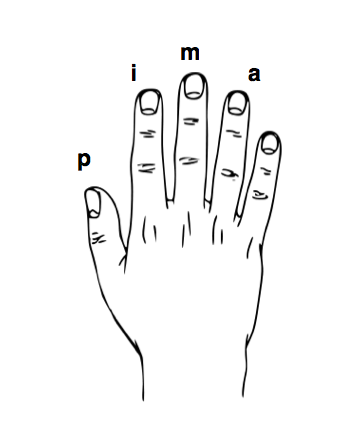Today’s post is a guest tutorial by classical guitarist and ukulelist Samantha Muir. She recently won the UOGB’s Valentines contest with a fancy bit of tremolo picking and was kind enough to let me share her technique with you.
You can find out more about Sam and buy her classical ukulele tab ebooks at SamanthaMuir.com.
What Is Tremolo?
Tremolo is a technique which uses rapidly repeated notes to give a shimmering or trembling effect. For string players, such as violinists, this involves the rapid moving back and forth of the bow. Classical guitarists also love tremolo. It’s a great way to woo your audience!
The most well known solo classical guitar piece is Tarrega’s haunting Recuerdos de la Alhambra, or Memories of the Alhambra, which uses tremolo. Throughout the gardens and courtyards of the Alhambra palace in Granada, Spain, you can hear sounds of water coming from the many fountains. The tremolo technique captures this idea of flowing water beautifully.
About 5 years ago I was fortunate enough to visit the Alhambra and a friend made a video of me playing Recuerdos de la Alhambra in the palace grounds. You can see it here on YouTube…
How Do You Do That?
Tremolo can be achieved using a pick. This requires a rapid back and forth movement with the pick (and bucket loads of practise!). The other way is to use your right hand fingers and thumb. To grasp the basics it is best to identify the fingers in the following way:
P = thumb and comes from the Spanish word Pulgar
i = index and comes from the Spanish word Indices
m = middle and comes from the Spanish word Medio
a = ring finger and comes from the Spanish word Anular
Note: The p i m a system is used by classical guitarists and is a good way to abbreviate all RH finger style patterns. It would make sense for ukulele players to universally adopt this system as it is a quick and easy system to learn. The left hand fingers are identified numerically so using the p i m a system for RH identification makes it immediately quite clear which hand is being referred to on the score.
OK, down to the nitty gritties…
When playing a tremolo you are basically playing a repeated 4 note pattern with the right hand. The RH fingering is:
p a m i p a m i p a m i p a m i etc
The pattern is repeated over and over. The speed and fluidity of the pattern create the tremolo effect.
Try playing this pattern on one string to get the feel of it. The critical thing is the connection between the thumb and ring, or a, finger. All the notes have to be played as evenly as possible.
Tremolo becomes really interesting when you play the thumb note on a different string, thus creating a bass.
For example:
Now you have a tremolo with 2 parts. The high G on a ukulele creates some interesting possibilities. You can, for example, play the melody note with the thumb and use notes played by the fingers as the accompaniment.
Achieving a fast, smooth and even tremolo takes a lot of time and practise. I mean lots, So don’t despair if you are finding this difficult. It is difficult. Start slowly and gradually increase the tempo. One method to develop your tremolo is to try and accent a particular finger. For example: practise slowly with a heavy accent on the a finger. Then try bringing out the m. And finally the i. Rhythmically this is quite weird but don’t worry. It will help to improve your control and overall RH technique.
If you want to hear some ukulele tremolo in action have a look at this video on YouTube. This was the video I enter for The Ukulele Orchestra of Great Britain’s Valentines Day Competition. The challenge was to do a 30 second version of Let Me Call You Sweetheart. Mine was considered “cheesiest”!
Here’s a little Tremolo Study to help you on your way.
Sam has released a number of classical ukulele tab ebooks including The Little Book of Carulli and The Little Book of Sor for Ukulele on Gumroad.






The cheesiest entry won, Samantha?
Or, was that the idea?